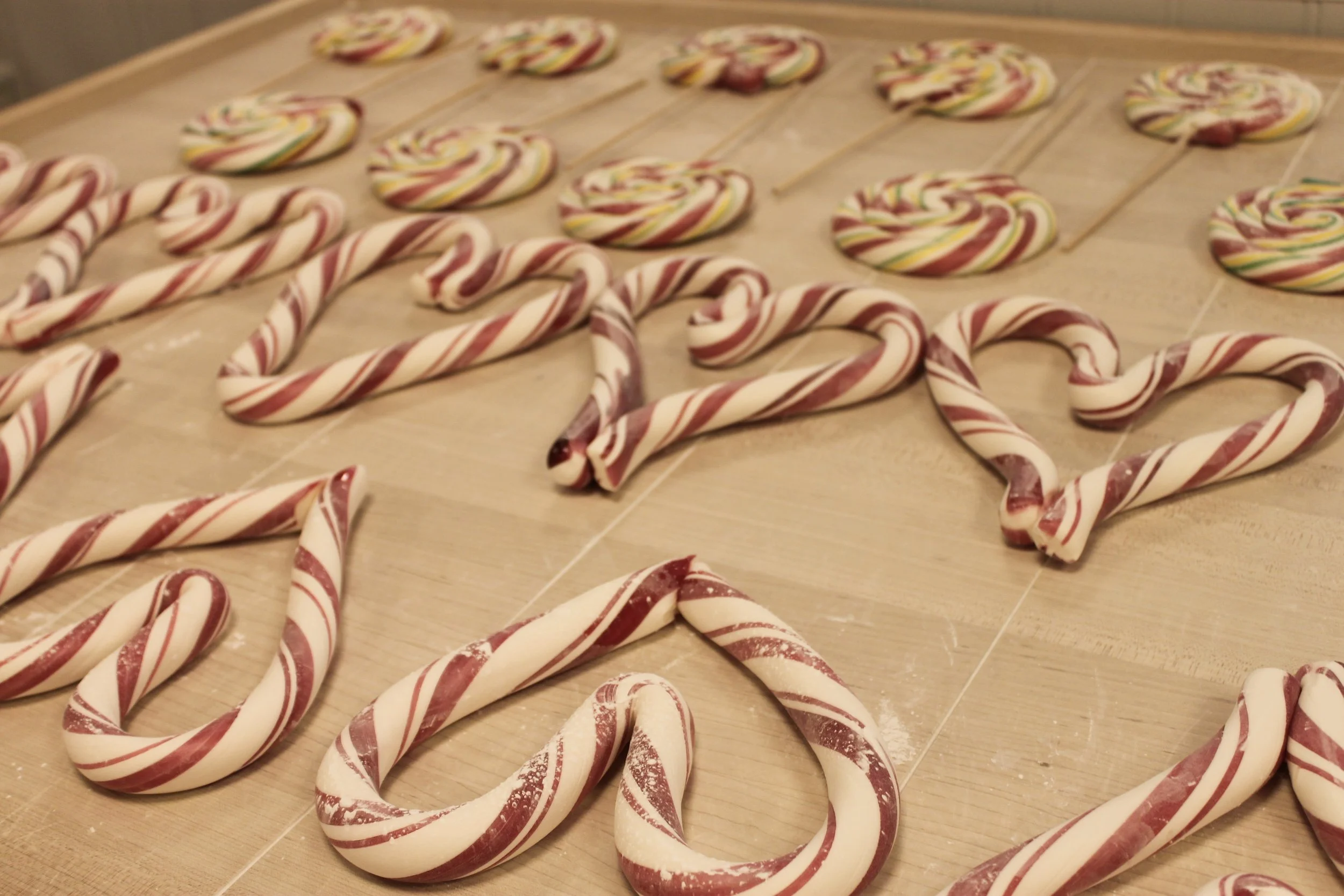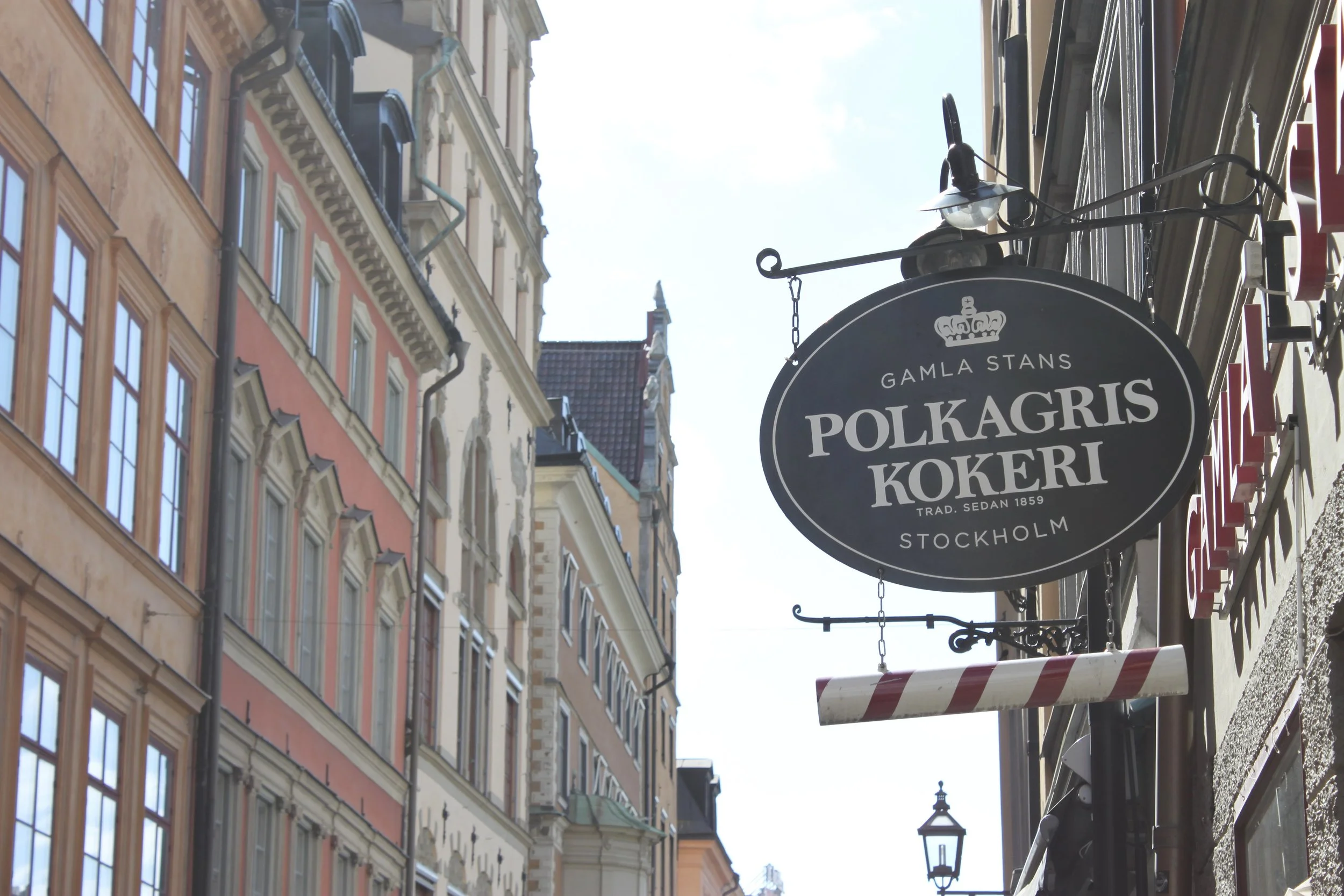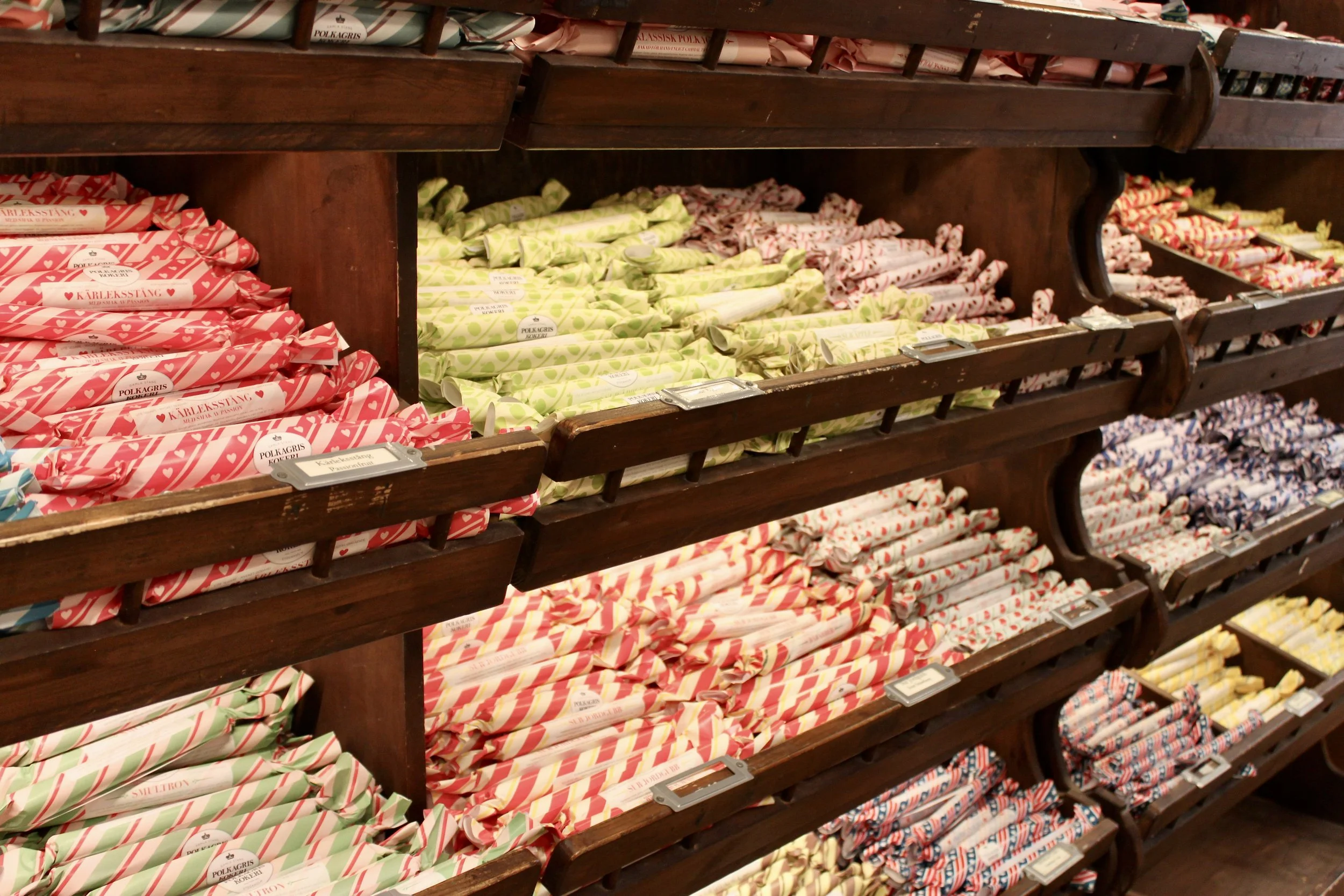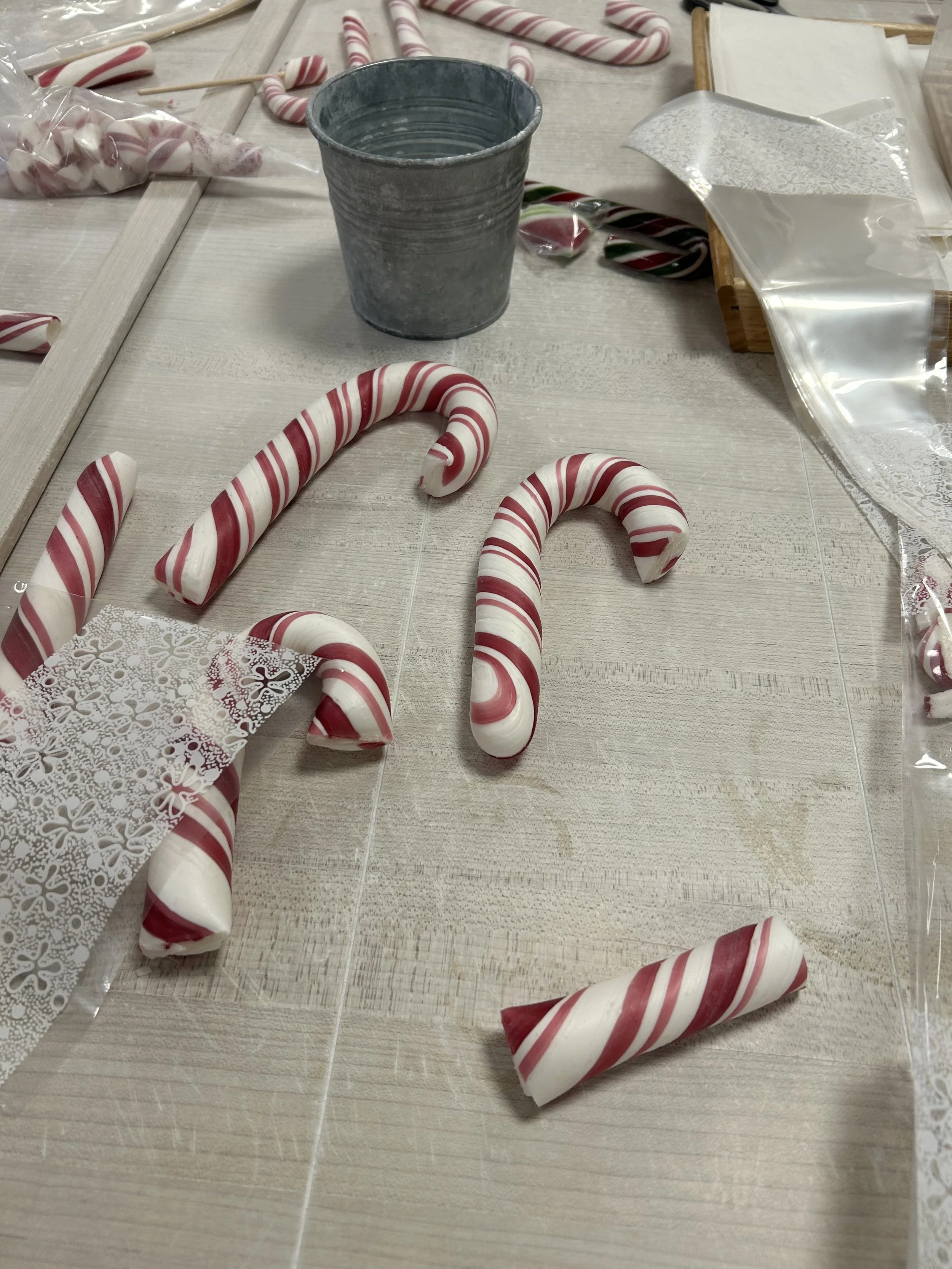CANDY CANE MAKING WORKSHOP
It is said that the candy cane was invented in 1670, when the choir director at the Cologne Cathedral in Germany gave sugar sticks to young singers to stop them from being disruptive. However, polkagris, the Swedish name for candy cane, was invented by a Swedish woman named Amalia Eriksson in 1859, in a town named Gränna. While both candy canes and polkagris use many of the same ingredients, polkagris is made with the addition of vinegar, which adds a slightly softer, chewier texture. Both confectionary treats are traditionally red and white striped and peppermint flavored, however, polkagris can also come in different colors, shapes, and even flavors!
gorgeous creations made at Gamla Stans Polkagriskokeri
These sugary iterations can be found at Gamla Stans Polkagriskokeri, a candy shop in the heart of Stockholm’s old town. This store is a treat for the tastebuds and the eyes, as an array of Swedish candy canes in brightly colored wrappings line the walls. Do you fancy a passionfruit candy stick? A blackberry one? Perhaps caramel, watermelon, or peppermint? This candy store has it all! They also make their own fudge, but the highlight of this shop is the open kitchen where you can see artisans at work making candy canes. This kitchen is also where they host private candy cane making workshops, and I would be lying if I said I did not plan my entire trip to Stockholm around this event.
When we arrived for our candy cane making workshop, we were instructed to pick out a couple of polkagris to sample, allowing us to choose the flavor we wanted to incorporate into our own creations. We tried the classic peppermint flavor, along with licorice, caramel, violet, and sour apple. We were also allowed to pick the stripe color. This meant that even though we chose sour apple, we were still able to use the classic red color often associated with peppermint candy canes.
the wall of polkagris inside the candy shop
Our instructor, Malte, was incredibly welcoming and knowledgeable. While he handled the boiling sugar, he explained to us the sticky business of candy cane making. We were then tasked with rolling out our own dough and making it different shapes! Candy canes, candy sticks, little lollipops, big round swirly lollipops, whatever we wanted to create before the dough cooled! Once we had treats in all different shapes and sizes, we packaged everything up and left with a HEFTY bag!
Here are some of my (somewhat bulky) candy canes!
I would highly recommend this workshop. It is only an hour (so you are not dedicating a crazy amount of time), the staff is supremely kind, and you will leave with delicious and one-of-a-kind candy – because you had a hand in making them!



